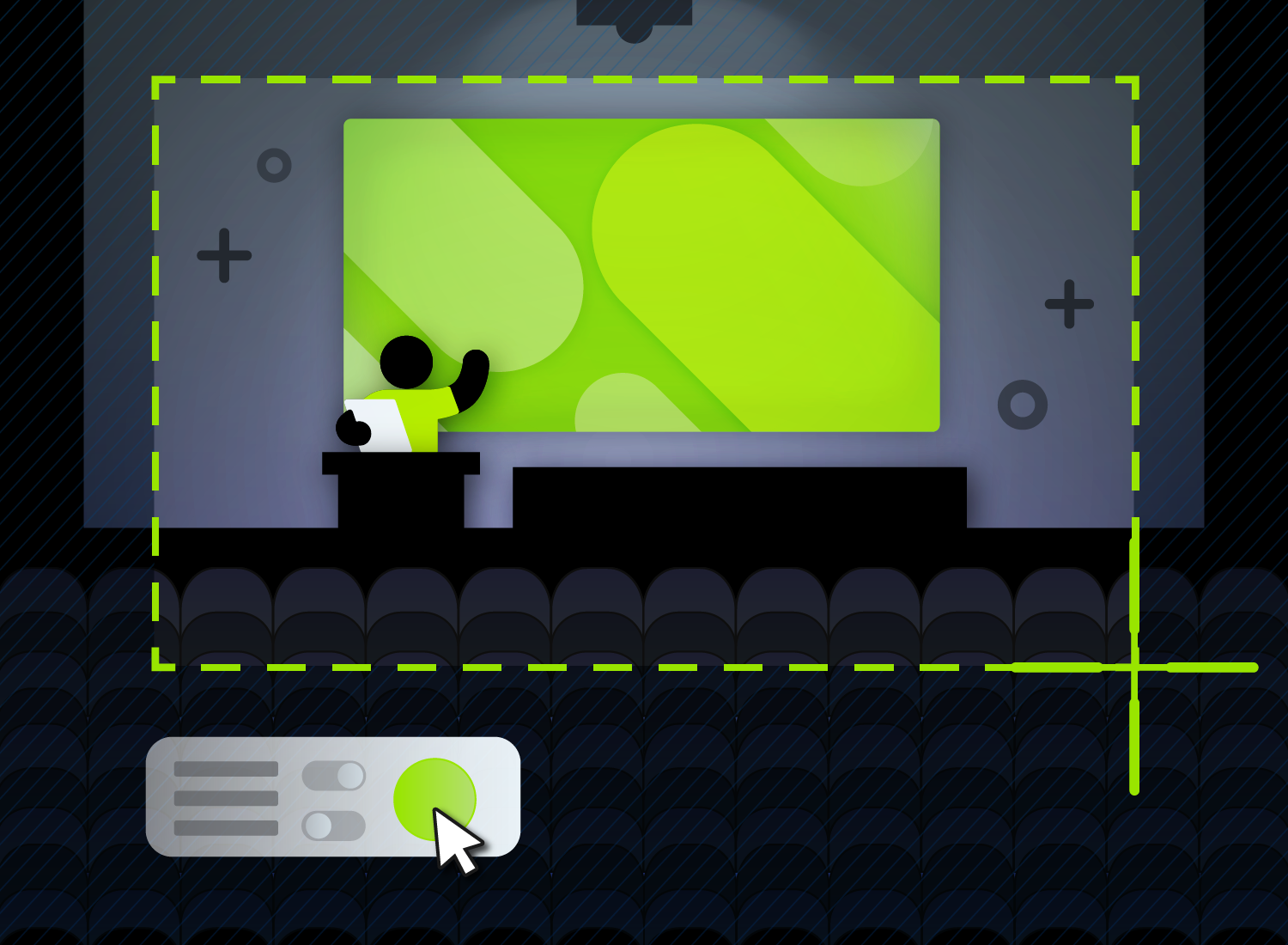Over the past decade, lecture captures have revolutionized the way we approach education, for both teachers and learners. What was once a time-consuming and resource-intensive procedure, that often required a professional production team, is now a simple, fast, and affordable process.
As online education and video-centric content continues to rise, lecture captures have become essential for businesses and academic institutions alike. By capturing and archiving lectures, institutions can provide students with the flexibility to learn at their own pace and ensure that valuable knowledge isn’t lost. Meanwhile, businesses can leverage lecture captures to train employees and create customer education content.
In this guide, we’ll explore the many benefits of lecture captures, how they work, and how to create effective videos that engage and educate your audience. Whether you’re a teacher, student, or business owner, this guide will provide you with everything you need to know to leverage this type of educational video as a powerful learning tool.
Go beyond simple lecture capture with Camtasia
Camtasiais a solution that allows the users to capture, manage, store, and share the video content.
Download for free nowWhat is a lecture capture?
At its core, a lecture capture is a recording of a lecture or presentation that’s made available to learners. Lecture captures can take many forms, from simple audio recordings to full-fledged video productions. These captures are usually created using lecture capture solutions such as video management systems (VMS), hardware, or software.
How you decide to capture a lecture will depend on your audience, the style of your lecture or lesson, and the resources you have access to. The benefit here is that no matter what equipment you have, you should still be able to create a quality lecture recording without much trouble.
For example, if you don’t have the time or budget to produce something resembling a Ted Talk, you can keep it simple by recording a PowerPoint presentation and your own audio narration.
To do this, you could use TechSmith Camtasia, which allows you to record your presentation, or import PowerPoint slides into a Camtasia project. There’s even a Camtasia PowerPoint add-in (on Windows) that allows you record with Camtasia from inside Powerpoint. This means you can record your camera alongside your presentation, giving your videos a personal touch that’ll help you connect with your students.
Of course, if you do want to stand on stage with a microphone and multiple cameras on you — you can! With a VMS, you can capture several streams simultaneously, allowing you to record cameras, audio feeds, visual aids (slides, etc.), and a background (virtual or physical).
What makes lecture captures truly brilliant is they can be used in many different settings, from traditional classrooms to online learning environments. These videos are great for providing students with flexible learning opportunities and allowing them to study at their own pace. They can also be used to train employees, facilitate remote meetings, and provide on-demand access to presentations and lectures.
Still not convinced? Well, we’ve got a whole list of reasons why lecture captures are so awesome…
Go beyond simple lecture capture with Camtasia
Camtasiais a solution that allows the users to capture, manage, store, and share the video content.
Download for free nowWhat are the benefits of lecture captures?
Visual communication
Research suggests that 65% of people are visual learners. This is why it’s important for lectures to feature engaging images, graphs, charts, photos, and other visual content to help students better understand the content and grasp concepts.
Gone are the days of boring, monotone lectures. Instead, consider creating dynamic presentations that combine the power of visuals with the knowledge you’re sharing. Not only will this capture your students’ attention, but it will also help them retain information more effectively.
By creating lectures — and lecture captures — that are rich with visuals, your students will be able to follow along with the content as if they were right there in the classroom. For the same reason, a video lecture recording can do a lot more to help students learn than a basic audio recording.
In fact, our own research has found that 83% of people prefer watching videos to accessing instructional or informational content via text or audio.
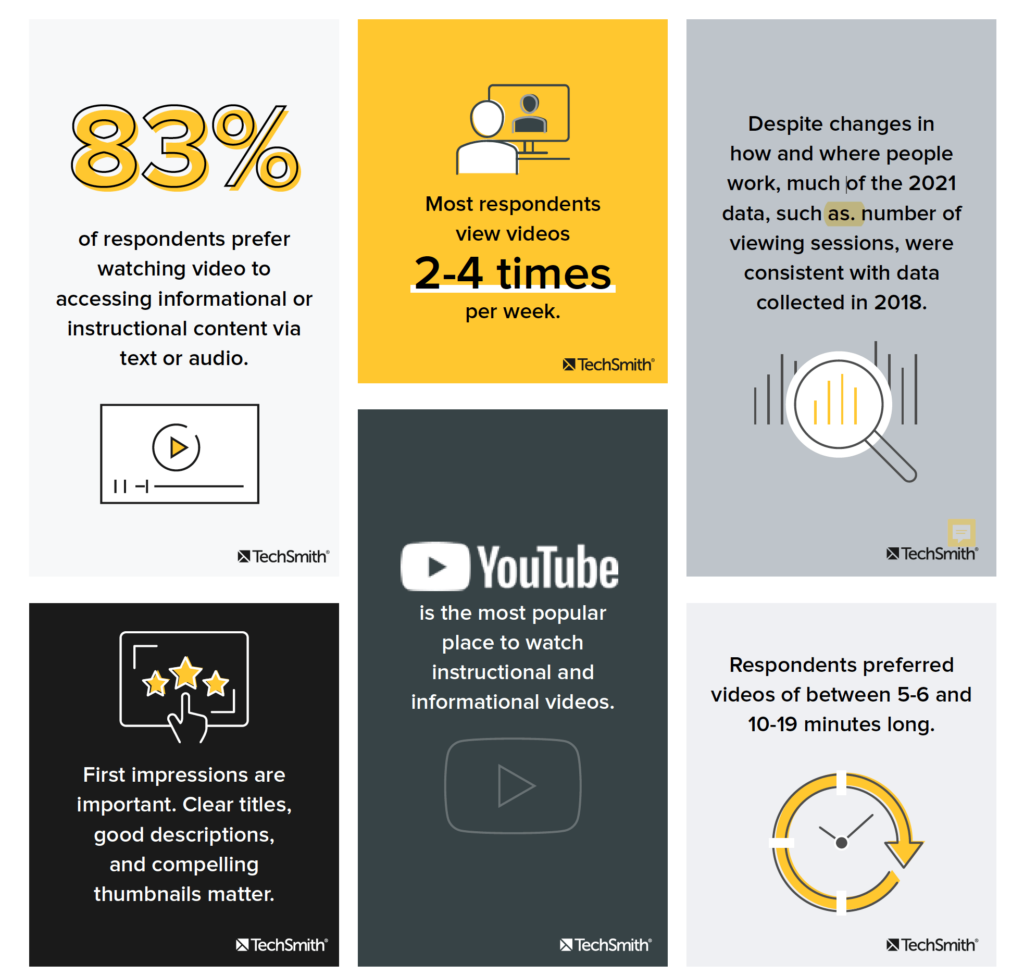
Better availability
Providing video lecture recordings allows students to access course materials outside of the classroom. As many educators consider new approaches to teaching, lecture captures can create a kind of hybrid classroom that caters to both at-home and in-person learning.
In the short-term, recorded lectures can be saved, shared, and archived online, which means students can easily refer back to recordings to study. This helps to alleviate the pressure of feeling like they have to process all the information during class.
In the long run, this can bring a new dimension to standard education models and methods, as students can preview archived content. This will help them be prepared for upcoming lessons, and even enter the classroom brimming with questions and discussion topics.
Go beyond simple lecture capture with Camtasia
Camtasiais a solution that allows the users to capture, manage, store, and share the video content.
Download for free nowADA compliance
As you can imagine, traditional lectures may not always be the best way of learning for each and every student. Everyone’s needs are different, but to ensure students with disabilities have an equal opportunity to learn, it’s important to provide material that’s easy for everyone to access and benefit from.
That’s where lecture captures come in. For example, a video that features both captions and audio will make your content more accessible to students with either hearing or visual impairments.
Many lecture capture tools already comply with the Americans with Disabilities Act of 1990 (making them ADA-compliant) and follow the guidelines of Section 508 of the Rehabilitation Act. If you’re not quite in the mood to read through government legislation (who is?) then that means “information and communication technology (ICT) is accessible to people with disabilities.”
In terms of equipment and functionality, you’ll be glad to know that ADA-compliant lecture capture tools make it easy for you to generate captions and are screen-reader compatible. If you’d like to know more about how the 508 compliance rule affects video content used in higher education, then you might want to check out this blog post we wrote.
Increase engagement
Lecture captures can even help your students engage with your content without you needing to be in the room with them. No, it’s not magic — it’s video.
Interactive video tools, such as Camtasia, provide innovative ways to ensure students stay focused and are actively participating in their learning. By utilizing features such as annotations, callouts and titles, you can direct the attention of students to key points and help them better retain the information being presented.
These visual elements can act as little guides through the content, underscoring important concepts and ideas — just as an instructor would during a live presentation. They can even be used to highlight areas where students might want to take additional notes or prepare questions for their instructors.
This interactive, student-focused approach encourages active learning, making educational content more accessible and memorable.
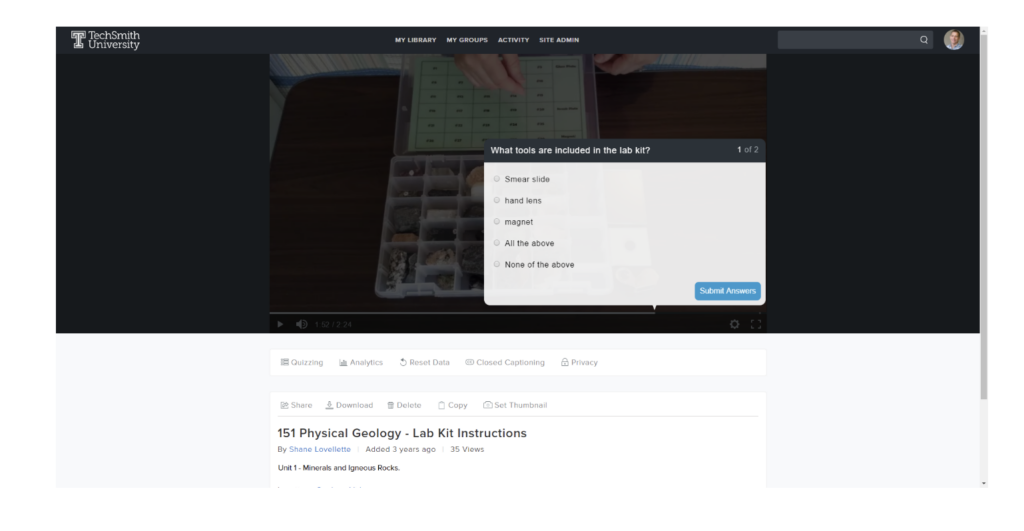
Build instructor-student relationships
Just because a course is conducted online, doesn’t mean that instructors and students can’t get to know each other. In fact, we’d argue that the connection between student and teacher is even more important when learning remotely.
Lecture captures give instructors the opportunity to build relationships with their students, even if they never meet in real life. By using quick and personalized videos, you can give students a richer and more human learning experience.
So whether you’re teaching a remote classroom or creating an online course, you can still build the all-important rapport with your students. Even something as simple as a course introduction or a class update can go a long way in engaging your students.
Hardware vs software-based lecture capture
Before we talk about how to create a lecture capture, it’s important to understand the different technologies and methods used for recording them.
In essence, there are two primary types of lecture capture solutions: hardware-based and software-based. Both have their own set of pros and cons, and the most suitable solution for you will depend on your needs and budget.
In this section, we’ll take a closer look at the differences between each solution and what makes them unique so that you can decide which is most suitable for you.
Ready to Embrace Asynchronous Communication?
How do we have fewer, better meetings? We decided it was time to reboot our meeting culture and communication norms at TechSmith.
Download now!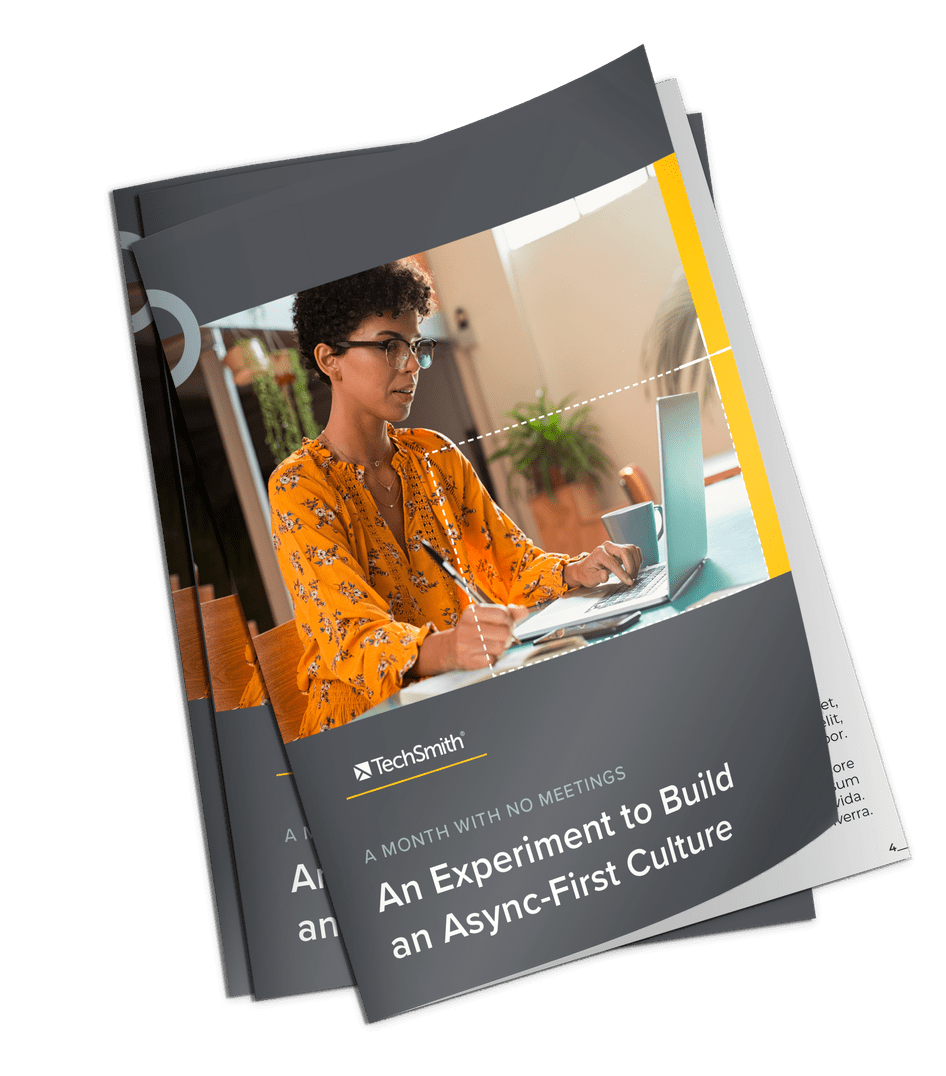
What is lecture capture hardware?
Lecture capture hardware involves the use of dedicated recording equipment, such as cameras, microphones, and capture cards. These devices are installed in the classroom or lecture hall and capture the audio, video, and other elements of the lecture as it’s delivered.
One significant advantage of hardware-based solutions is that they generally produce high-quality recordings with minimal user input. However, they can be more expensive to set up and maintain — and might even require professional installation.
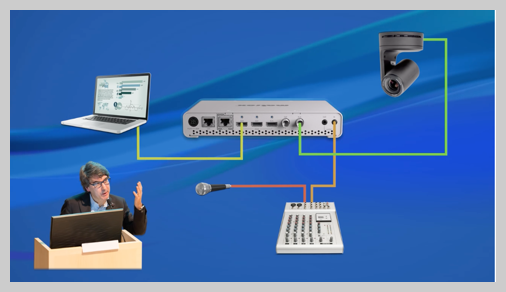
Image Source: Matrox
Pros
- Records full HD and SD video and audio
- Captures multiple sources such as document cameras, lecture cameras, or tablets
- Allows for scheduled lecture recordings
- Can be relatively hands-off for instructors
Cons
- Rigid recording times and locations
- Hardware technology ages quickly
- Upkeep requires lots of technical support
- May require professional installation
Go beyond simple lecture capture with Camtasia
Camtasiais a solution that allows the users to capture, manage, store, and share the video content.
Download for free nowWhat is lecture capture software?
On the other hand, software-based solutions typically rely on software that’s installed on a computer or mobile device to capture and record the lecture. These solutions tend to be more affordable and are easier to use than hardware-based options.
They also make it easier to record lectures at different times and in different places. The downside, however, is that the quality of the recordings may be lower than that of hardware-based solutions, and they may require more user input and setup time.
Pros
- Recording flexibility
- Scalability to any classroom or complimentary suite
- Editing ability
- Portable content
- Ad-hoc usage
Cons
- Challenging to incorporate multiple inputs/peripherals
- Licensing and support costsAutomatic scheduling is limited
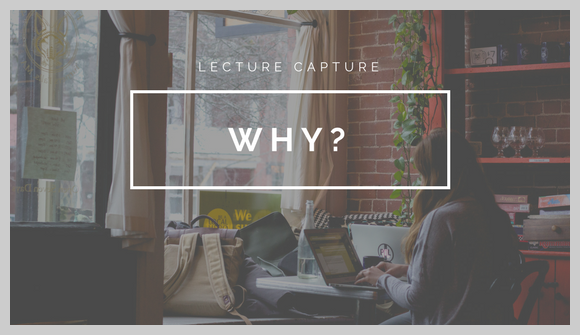
How do you record lectures?
Recording lectures doesn’t have to be intimidating or complicated, but it does need to be flexible.
More and more classrooms are being set up with hardware-based audio and video equipment that allows instructors to record in-class lectures. But now, thanks to software-based platforms, you can record lectures and videos for online courses outside of the classroom as well.
Regardless of where your lecture recording takes place, the best lecture capture systems allow teachers to focus on teaching while seamlessly taking care of the recording. While every system is a little different, here are three basic steps to recording your lectures:
Step 1: Record your video
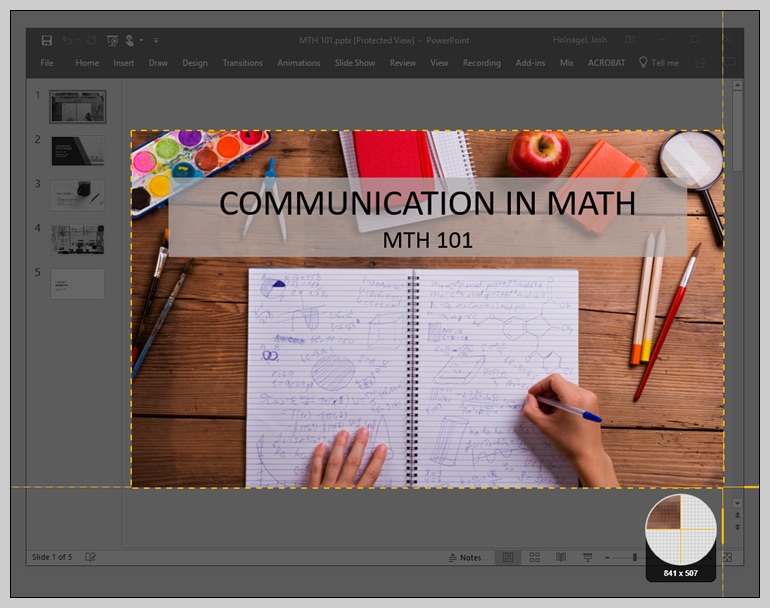
Whether you’re using a recorder for in-class lectures or capturing content on a laptop in your office, it all starts with recording.
Remember, no matter where you’re recording, you should always strive to perfect the lighting of your video, and record high-quality audio — your students will thank you for going the extra mile.
Step 2: Edit your video
Camtasia makes it super easy to cut out unwanted content and add interactive elements to keep students focused and engaged. With an intuitive interface, you can easily trim parts of a video you don’t want to include, such as off-topic discussions or technical issues, and create a polished final product that engages students.
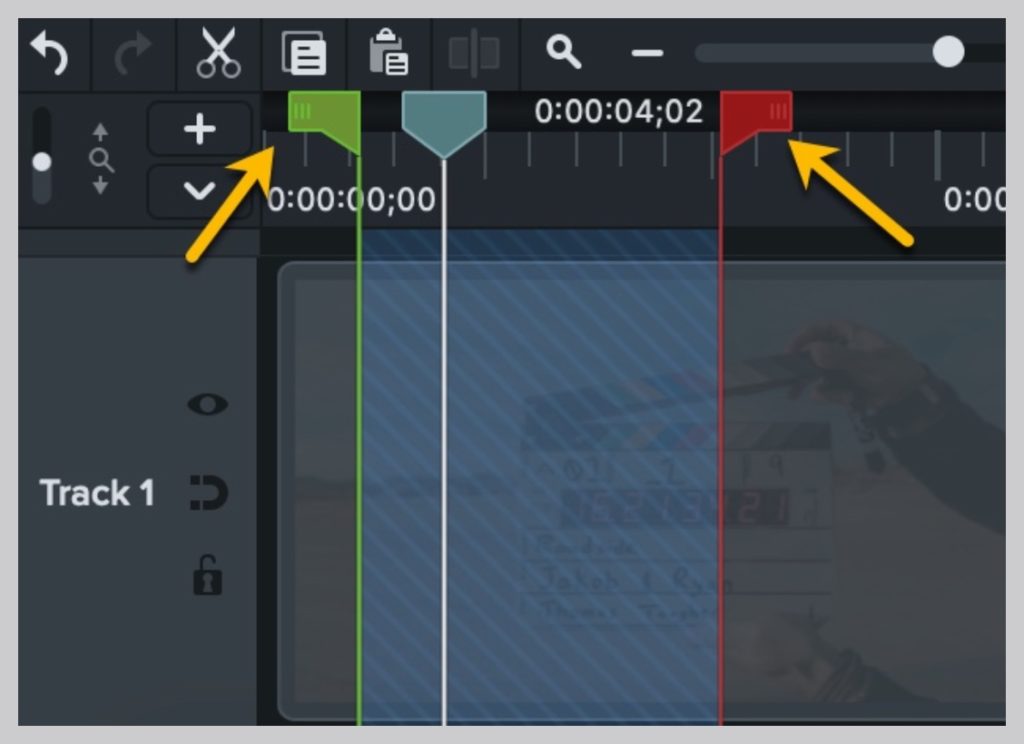
As well as keeping the actual content of your video void of distractions and “dead time”, you can use Camtasia to add a variety of interactive elements, such hotspots and animations. Even little pops of color can help students pay more attention to the material being covered.
Another one of Camtasia’s standout features is its compatibility with PowerPoint and the ability to import PowerPoint slides directly into Camtasia, allowing you to seamlessly integrate your pre-existing content. This not only saves valuable preparation time, but also provides a format that students are familiar with, which helps bridge the gap between traditional lecture styles and dynamic video content.
Step 3: Share and manage content
Once you’ve recorded and edited your videos, you’ll want to make sure they have somewhere to live long-term.
Many lecture capture systems integrate with other systems — like your school’s learning management system. This makes your videos easily accessible on Blackboard, Moodle, Canvas, or other systems your institution uses.
Go beyond simple lecture capture with Camtasia
Camtasiais a solution that allows the users to capture, manage, store, and share the video content.
Download for free nowLecture-capture FAQs
A lecture capture is a recording of a classroom lecture — usually as a video — that’s made available for students to review after a class. It’s also an effective way to optimize the learning experience for all your students.
Lecture captures give students the ability to re-watch lectures at their own pace and review the material as needed, which can help them succeed in their studies. Lecture recordings also provide institutions with an opportunity to supplement courses with video material and allow students to view lectures they might have missed.
Lecture capture hardware refers to physical appliances that are placed in classrooms and lecture halls to record and/or stream presentations, events, and lectures.
Lecture capture software lets you record video presentations, manage video files, and stream video content to any device. Software-based systems allow you to record from any standard computer without needing a hardware capture box.
The best lecture capture systems don’t limit where lectures can be watched. Look for a system that allows students to choose the best option for them. Whether they have a Mac or PC, iOS or Android device, the content should always be easy to access and readily available.
Modern software systems can link directly into a school’s learning management system (LMS), and most lecture capture hardware is built to work with existing AV equipment.


